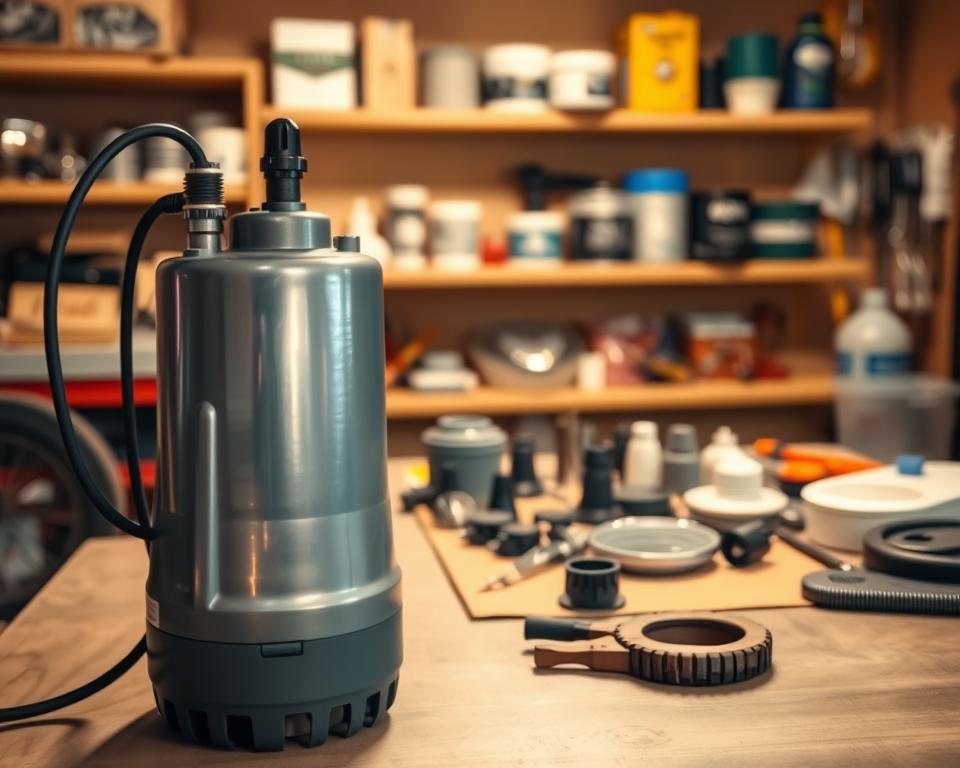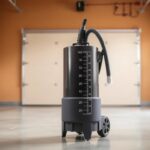RV Black Water Tank Pump: Tips for Guidance and Upkeep
Ever wondered about the impact of the RV black water tank pump on your RVing journey? The RV’s sanitation relies heavily on the black water tank pump. For trouble-free journeys, appropriate upkeep is essential. This guide provides essential details for handling your RV waste water pump. By grasping its significance, you’ll improve its performance and enjoy your RV adventures even more.
Core Lessons
- Effective waste management heavily relies on the RV black water tank pump.
- Regular maintenance can prolong the lifespan of your RV waste water pump.
- If you understand the system’s components, you’ll be better at fixing problems.
- Safe dumping practices are essential for both hygiene and the environment.
- Winterizing your RV black water tank system can prevent costly repairs.
- By ensuring your RV sanitation pump is clean, you can reduce the occurrence of clogs and odors.
RV Water Tanks: An Overview
Perhaps many RV owners haven’t fully understood the importance of having different water tanks for a seamless camping experience with mobile RV septic service. It’s essential to know what the RV fresh water, gray water, and black water tanks do. Each plays a unique role and needs proper care.
The purpose of the RV fresh water tank is to store water that is safe to drink. Drinking, cooking, and maintaining hygiene are the uses for this water. Ensuring this tank’s cleanliness and water safety is paramount. Fresh water is crucial for hydration and health during travels.
On the other hand, the RV gray water tank collects wastewater from sinks and showers. Frequent checks and draining are necessary because this tank can fill up quickly. Managing the gray water tank properly is key to maintaining a clean living environment in your RV.
Holding waste from the toilet, the RV black water tank is very important. Regular attention is needed to prevent smells and the accumulation of waste in this tank. Employing appropriate tank chemicals enhances condition and experience. Knowing how to care for each tank makes RV trips more enjoyable.
The Function of an RV Black Water Tank Pump
A key component of recreational vehicle sanitation is the RV black water tank pump. Its job is to transfer waste to specific locations for disposal. For maintenance purposes and to prevent costly fixes, it’s important to understand its function.
There are different types of pumps available for RV owners, such as the sewer pump. A popular option is the macerator pump, as it grinds waste, resulting in quicker disposal. It’s especially convenient when there are many people at the dump stations.
The key to good waste management in an RV is a quality black tank pump. It ensures that the RV remains clean and comfortable for occupants. You can boost your RV experience by regularly checking your pump and understanding how it operates.
The Essential Components of a Black Water Tank System
For effective waste management, it’s vital to understand the RV black water tank system. It involves numerous vital components that work together to ensure smooth functionality. The black water tank, which contains the waste from the RV toilet, is the most crucial component. Because it’s made of tough materials, it can endure a range of conditions.

A significant function of the system’s pump is to move waste to a designated disposal area. For those who own RVs, it is essential. Playing a vital role as well are sewer hoses, which provide a flexible connection between the tank and the dump station. Made to prevent leaks and keep odors contained, these hoses ensure a clean way to dispose of waste.
To attach sewer hoses and allow for efficient waste transfer, connection ports are necessary. For the management of waste flow, termination valves are essential. They prevent backflow and spills during disposal, preserving sanitation.
By becoming familiar with these vital components, RV owners can maintain their sanitation system effectively. This understanding is vital for solving problems during trips or when using the RV, improving the entire RV experience.
How to Properly Use the RV Black Water Tank Pump
Becoming proficient in using the RV sanitation pump significantly improves your RV lifestyle. Knowing how to operate the black tank properly is vital for a smooth-running system. Flushing the tank thoroughly after each use is a critical step. This stops solid waste from building up, which can lead to clogs and other problems.
Performing regular checks on your RV sanitation pump ensures it functions as expected. This proactive measure helps avoid any unpleasant situations while on the road. Another essential thing is to use toilet paper that is specially made for RVs. Designed to disintegrate quickly, this type of toilet paper helps in reducing the risk of clogs.
Maintaining closed termination valves, except when emptying, is another crucial practice. It helps to stop odors from spreading. Tank deodorants and cleaners can also be added to help maintain a pleasant smell and cleanliness in the system. Adhering to these guidelines improves your experience with the RV black water tank.
| Correct Ways to Use Your Black Tank | Advantages |
|---|---|
| Ensure Ample Water for Flushing | Keeps solid waste from causing blockages |
| Make Sure to Regularly Check How the Pump Works | Makes sure it works well |
| It’s Important to Use RV-Specific Toilet Paper | Decreases the likelihood of clogs |
| Keep Termination Valves Closed | Lowers the amount of odor |
| The Use of Tank Deodorants and Cleaning Agents | Helps the system stay clean and smell good |
Essential Maintenance Tips for the Black Water Tank Pump
Making sure your RV’s black water tank pump is maintained regularly is crucial for its longevity and efficient operation. One aspect of this is using the correct chemical treatments that are intended for these tanks. Waste is broken down efficiently by them, and they also prevent odors.
Ensuring an adequate amount of water is used when flushing the toilet is also critical. This helps the waste travel easily to the tank, which reduces the chance of buildup. Make sure you also regularly deep clean the tank and all of its components. Use the recommended tools for this important task.
To avoid any issues, always check the levels in the tank. Don’t wait to fix any leaks or overflows that you notice. It’s important to empty the tank regularly so that solid waste doesn’t build up. Creating a maintenance schedule helps ensure a trouble-free RV experience.
| Upkeep Task | Frequency | Details |
|---|---|---|
| Monitor levels | Each time you travel | Make sure the tank isn’t too full to avoid leaks. |
| Chemical treatment | After every disposal | Use treatments to help break down waste well. |
| Flush the system | Every month | Apply a cleaning solution to help keep the tank clean. |
| Inspect the pump | Ahead of long trips | Check for wear and tear to prevent breakdowns on the road. |
| Empty the tank | Depending on the need | It’s best to empty the tank at designated dump stations when it reaches full capacity. |
Making sure you follow these important maintenance practices will help your black water tank pump work as it should. This will improve your RV trips significantly.
How to Troubleshoot Common Black Water Tank Pump Issues
Fixing problems with the black tank pump can appear challenging. Many people who own RVs run into various issues with their RV black tanks, such as blockages, leaks, or ongoing bad smells. Addressing these issues early can help you save time and avoid expensive repairs later.
The first thing to do is check the hoses that are connected to the black tank pump. These hoses are prone to blockages, which can make the pump ineffective. Take the hoses off and see if there’s any buildup or dirt inside. If you discover any blockages, ensure the hoses are completely clean before you put them back.
After that, check the seals that are around the pump and the tank. Leaks can happen if the seals are damaged, and you might not realize it until there’s been a lot of damage. If you find any seals that are not working properly, replace them right away to stop more problems from happening.
If you’re dealing with odors that just won’t disappear, enzyme treatments might be useful. These treatments help to dissolve waste and get rid of bad smells. For the best outcome, make sure you follow the instructions from the manufacturer.
Here’s a table for quick reference that lists common issues and their solutions:
| Problem | Possible Cause | What to Do |
|---|---|---|
| Clogs | Dirt or waste in the hoses or tank | Inspect and clean the hoses |
| Escape of fluid | Faulty seals | Make sure to inspect the seals and replace any that are damaged |
| Odors | Waste buildup | Make sure to use enzyme treatments |
| Pump is out of order | Electrical issues | Check connections and battery |
Recognizing the warning signs early on can prevent minor issues from turning into major problems with your RV black tank. Regular upkeep and careful attention will help your black tank pump last longer, which will improve your time in your RV.
RV Black Water Tank Pump Cleaning Techniques
It’s vital to maintain the cleanliness of your RV’s black water tank for hygiene and the health of its plumbing system. By rinsing with fresh water after you use it, you can help minimize odors and keep everything working smoothly. It helps prevent waste from accumulating and maintains the condition of the tank.
If you want to clean it more thoroughly, use cleaning products that are specifically designed for black water systems. They work well to break down waste and get rid of odors. Put water and the cleaning solution in the tank, and then let it sit. The job of cleaning is made easier if your RV has a built-in flush system.
When driving, sharp turns or sloshing techniques can agitate the tank’s contents. It helps to dislodge any residue that might be on the walls of the tank. Methods like these for cleaning help the sensors be more accurate, thus preventing sewage-related issues.
How to Dump Your RV Waste Safely at Dump Stations
Understanding the right way to handle things at RV dump stations is essential for the benefit of all users. When you arrive at a dump station, check that your RV is in the right spot. Then, get your gear ready for dumping.
To ensure the process is efficient, pay close attention to these steps:
- Ensure a firm connection between your sewer hose and the station’s outlet.
- The first step is to open the black water valve so the sewage can flow out.
- Close the valve of the black tank after it’s empty. Then, open the gray water valve to clean the hose with the less dirty water.
- Once done, carefully remove your hose to prevent any spills.
- Be sure to always clean your hoses with water that’s safe to drink and then put them away immediately.
It’s also vital that you adhere to the local laws regarding waste disposal. Many places have specific rules that you need to follow to ensure environmental protection. Not following these can result in fines or other consequences.
It’s important to be respectful at RV dump stations so that everyone has a better experience. Keeping the area clean and following the regulations shows that you respect the community. These kinds of actions help to build a culture of responsibility among RV lovers and encourage camping habits that are environmentally friendly.
Preparing Your RV Black Water Tank System for Winter
To ensure your black water system doesn’t freeze, winterizing your RV tanks is essential. It’s important to prepare properly to avoid damage from frozen water inside the system. To make sure your RV black tank is effectively cared for in the winter, you need to follow specific steps.
- Begin the process by fully draining the black water tank with the correct pump and connections.
- Next, bypass the water heater to prevent water from entering and accumulating in the unit.
- Make sure to use antifreeze that is made for RVs, because regular antifreeze can be poisonous and bad for the environment. Pour the antifreeze into the system according to the product instructions.
- Leave all faucets and drains open to allow any remaining water to escape and for the antifreeze to circulate properly.
- The last step is to check that all access panels are sealed and secure to prevent water from getting in during the winter months.
By completing these winterization steps, RV owners can protect their black water tank systems from the severe effects of winter. Planning ahead in this way helps to prevent costly repairs or maintenance when the season changes.
The Bottom Line
To be a successful RV owner, you really need to maintain your RV black water tank efficiently. Understanding the black water tank pump and following the maintenance plans in this guide will lead to more enjoyable travels. Taking good care of your equipment will make it last longer and make managing waste in your RV easier. This makes travel less daunting.
Knowing about your RV’s black water system is essential for dealing with problems directly. By using good maintenance, troubleshooting, and cleaning practices, you can avoid unexpected problems. This lets you enjoy worry-free road trips. Using well-regarded services like All in Sanitation can strengthen your maintenance efforts. They give you the important products and support you need for great care.
To be a good RV owner, you need to be attentive and take proper care of all parts of your vehicle, including the black water tank. Having this information means you’re now ready to explore without any concerns. You’ve made all the right moves to guarantee an outstanding journey for yourself and others.

